Varicose veins on the legs are a specific enlargement of the veins of the lower limbs, which is accompanied by a general disorder of the blood flow and the failure of the valve. The enlargement of the veins is characteristic of women and men aged 40 to 60 years.
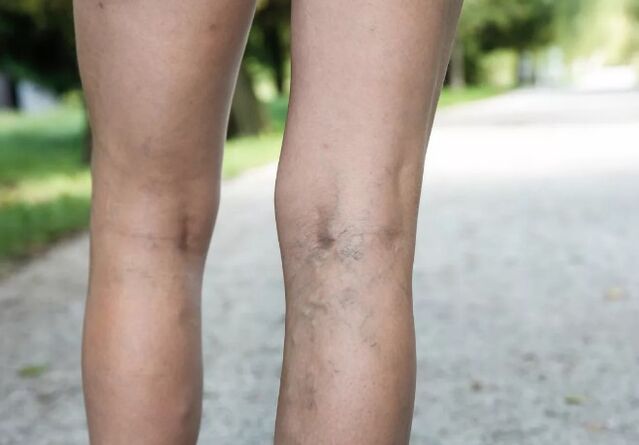
Development mechanism
The trigger in the development of such pathology as varicose veins is considered to be a violation of the normal operation of venous valves with the appearance of blood reflux (reflux - the reverse current). At the cellular level, this is associated with a violation of the balance between some components of the venous wall.
The initial stage is characterized by the presence of a genetic and causal factor (prolonged stay in a sitting position, excess weight, injury, etc. ). At the same time, changes in the parameters of the so -called cut stress, which is a set of blood movement indicators through the vessels to which the endothelium responds very significantly.
If the irritating factor acts for a long time on the wall of the vessel, then the leukocytes are firmly fixed to the endothelial cells that cause the initial stage of inflammation. The inflammatory process spreads through the venous canal of the lower limbs.
Especially quickly, such processes are carried out in the valves that are subjected to constant, severe mechanical stress. However, one leg inflammation can be more pronounced than the other. First, it depends on the original cause of organ damage, such as the right leg, varicose veins may be more pronounced among the athletes who are emphasis on it.
When the valves are damaged, pathological excretion of blood occurs through the mouth of large and small subcutaneous veins. Due to the restart, excess blood, the wall of the venous vessels appears.
Over time, a dynamic venous hypertension develops, which is characterized by a decrease in pressure in the vessel, as a rule it occurs during walking to the level of inability to provide normal blood perfusion through the tissue.
Such a process is accompanied by edema, impregnation of subcutaneous tissue with blood cells (red blood cells and leukocytes). Over time, the skin changes color, swells, skin pigmentation increases. With the death of cells, which is not indecent during medical care, which further leads to the development of trophic ulcers.

Varicose
Since 2000, a new classification of varicose veins of the lower limbs has been developed.
Forms of varicose veins:
- Intradermal or segmental varicose veins without pathological changes;
- Segmental varicose veins with superficial vein reflux;
- Ordinary varicose veins of the superficial veins;
- Expansion of varicose veins in the presence of a deep vein reflux.
The degree of chronic venous insufficiency:
- 0 - does not develop;
- I - "severe leg" syndrome, the appearance of edema;
- II - persistent edema, eczema, lipodermosclerosis;
- III - trophic ulcer.
Complications of venous enlargement of the lower limb veins are one of the serious conditions that affect the body: thrombophlebitis, trophic ulcers, erysipelas, erysipelas or bleeding.
Working classification of the disease
By form:
- Varicose veins of the subcutaneous vein of the thigh (starting from the mouth) - descending varicose veins;
- ascending varicose veins (lesion of Ven, lower legs and legs, starting from the bottom up);
From clinical groups:
- The first group is a segmental internal enlargement of the veins without perforators;
- The second group is the expansion of fragments of venous trunks;
- The third group is the enlargement of the subcutaneous vein of the thigh and lower leg;
- The fourth group is an extended expansion of a large and small subcutaneous vein with the presence of insolvent perforators;
- The fifth group is the enlargement of the superficial veins, a large and small subcutaneous vein with tissue induction.
The working classification of complications and the degree of chronic insufficiency is no different from the standard.
The reasons for the development of varicose veins
The exact cause of the development of this pathology has not yet been fully understood, but there are a number of factors that contribute to the appearance of varicose veins:
- Genetic predisposition (the mutating gene responsible for the structure of the vessel wall is transmitted);
- Changes in the hormonal background (pregnancy - during pregnancy, the composition of hormones in the body changes (the amount of progesterone increases and estrogen decreases), which directly affects the formation of coagulation factors of the blood);
- Obesity (overweight leads to a sedentary lifestyle and therefore collapse);
- Diabetes sugar (increased blood sugar over time damages the wall of the vessel over time);
- Alcohol abuse (a large amount of alcohol in the blood is the cause of dehydration and condensation of blood);
- heavy physical activity;
- Congenital disorders of blood coagulation;
- Irrational diet, diet errors;
- uncomfortable and close linen (constant wearing leads to compression of blood vessels);
- Frequent constipation (increased inside -ABDomized pressure leads to difficult blood flow to the lower limbs);
- constant walking in heels (development of stagnation and insufficient muscle movement);
- increased air temperature (leads to dehydration, condensation of blood and therefore to the formation of blood clots);
- diseases of the cardiovascular system and kidneys;
- overdose with drugs that increase blood coagulation;
- Surgical interventions (blood loss, vessel compression).
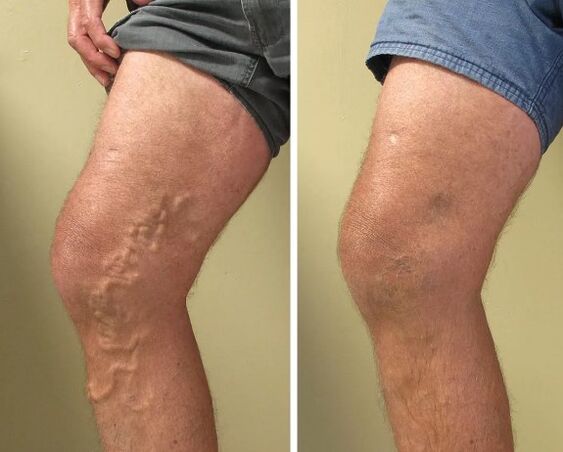
Stages of varicose veins
During this period of development of medicine, three main stages of the development of varicose veins and the early stages were distinguished, when the disease is very difficult to notice.
The early stage of the disease is accompanied by swelling, weight, very often patient complains that the legs hurt during a long walk. These are all signs of the onset of pathology, it's time to start prevention - massage, leg creams, physical activity.
Extension of first -degree veins.This stage is characterized by all the symptoms listed above, to which vascular stars are added, bruising on the legs, knit veins visible through the skin. In addition, the appearance of convulsions at night and burning in the stop area is noted.
Enlargement of grade 2 veins.At this stage, the total number of stars and nodes is increasing, they become more noticeable. Swelling occurs, leg pain increases and becomes unbearable to withstand it.
Extension of grade 3 veins.This is the most difficult on the stage, which is accompanied by serious lesions on the skin of the legs, it becomes dry, lifeless and cracked. The skin of the lower leg becomes dark blue, its structure and pigmentation change.
The third stage is the last when this pathological process can be called varicose veins. The subsequent development of the processes ceases to more serious diseases.
It is advisable to consult a doctor in the second stage of the disease, as medical care is not provided in serious consequences after a while.
The question immediately arises: "Which doctor will go to? ", The answer is simple - a doctor who specializes in the pathology of the veins of the lower limbs is called a phlebologist.
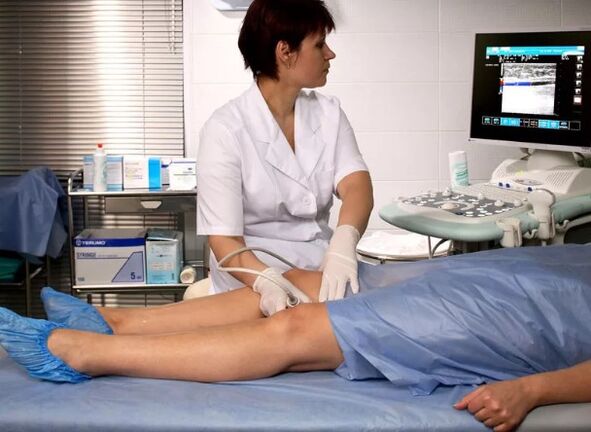
Symptoms and clinical varicose veins
The leading signs of this disease are numerous extensions of the subcutaneous veins, which is why the disease is called. The onset of the disease is usually accompanied by several and non -specific characteristics.
In this condition, patients experience heaviness in the legs, rapid fatigue while driving, sometimes burning and cramps. In addition to the pain, the disease is manifested by edema, developing in the late afternoon, after heavy work.
With long dividing veins of length, symptoms such as eczema and itching appear. Patients scratch their legs, creating uncomfortable sensations. Due to the development of the disease, the skin over the veins becomes sharper, itching places constantly combine, leading to the appearance of wounds.
Over time, the skin color at the lower leg turns bluish. If medical care is not provided in such a situation, it is possible to develop skin hyperpigmentation and lipodermasherosis. Throfic ulcers develop in even more advanced stages.
Diagnosis
Different varicose veins are visible and not armed with an armed form, but how dangerous this condition should be detected using instrumental diagnostic methods.
Currently, the most information method is the ultrasound methodology of the duplex scanning of the veins. It is evaluated by the operation of the valves, the ability of the cross side and the presence of blood clots. Timely vein study will avoid severe and irreversible consequences.
Methods of treatment
How to treat varicose veins? Completely treating varicose veins is only possible with the help of surgery. People who have a hereditary predisposition or risk factors recommend that you visit a specialized doctor 2-3 times a year for ultrasound examination of the veins, the surgery of varicose veins is prescribed at the second stage of the development of the disease.
How much does the operation cost? The price can be done differently, it all depends on the severity of the development of the disease.
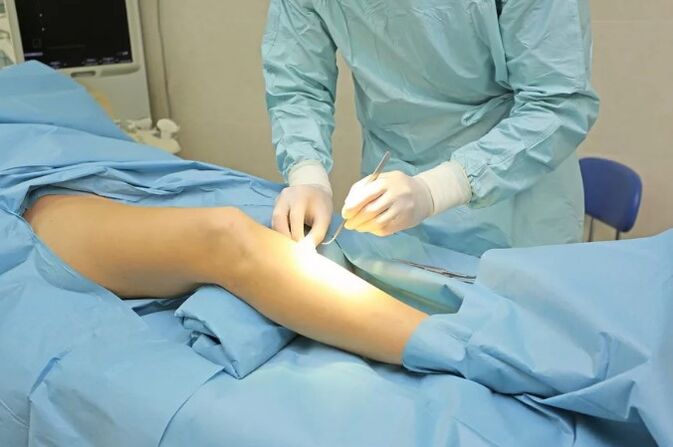
Surgical treatment
Flbectomy
Indications for the removal of veins: extensive varicose veins, pathological enlargement of the subcutaneous veins, trophic ulcers, acute thrombophlebitis, expansion of deep veins, accompanied by general malaise (fatigue, dizziness).
Contraindications to the disease: coronary heart disease, pregnancy, age in the elderly, severe infectious diseases, inflammatory processes.
The advantage of surgical treatment is that this is the only effective method of treatment for advanced forms of the disease.
The disadvantage of this treatment: trauma, anesthesia, a long postoperative period.
Laser therapy (EVVK)
Indications: varicose veins of the legs in combination with various serious diseases (ischemia, thrombophlebitis, asthma, bronchitis, pleurisy, ulcer, cholecystitis, pyelonephritis, peritonitis, dermatitis and barrel).
Laser treatment is contraindicated in cases where it is noted: oncology, liver disease, kidneys, heart (stage of decompensation), pregnancy and cerebral sclerosis.
The advantages of such treatment are to get rid of the vascular model, the maximum quick procedure, painless and safe, does not require stationary monitoring and atraumatic.
Disadvantages: It is not at all, expensive, the appearance of scars or clarification of the surrounding tissue is possible.
Radio frequency coagulation of varicose veins
Indications: Varicose veins with damage to the trunk of a small and large subcutaneous vein, trophic ulcers.
Contraindications: acute form of thrombophlebitis, mental disorders, pregnancy.
Advantages: painlessness, hospitalization is not required after surgery, does not interfere with work.
Disadvantages: expensive procedure.
Sclerotherapy
Indications: varicose veins in the early stages.
Contraindications: pregnancy, lactation, an allergic reaction to sclerosant, purulent repulsive processes of the legs, thrombosis.
The advantages of this method of treatment are that financially such treatment is more cheap than surgery, rapid recovery, best cosmetic effect.
Disadvantages: Perhaps entering the deep veins of sclerosanne is not effective enough with advanced forms of the disease.
Medication
Treatment with drugs helps to improve blood vessels, the condition of the valves, enhances blood and lymph flow, and also eliminates inflammation but does not cure the patient.
How to treat?
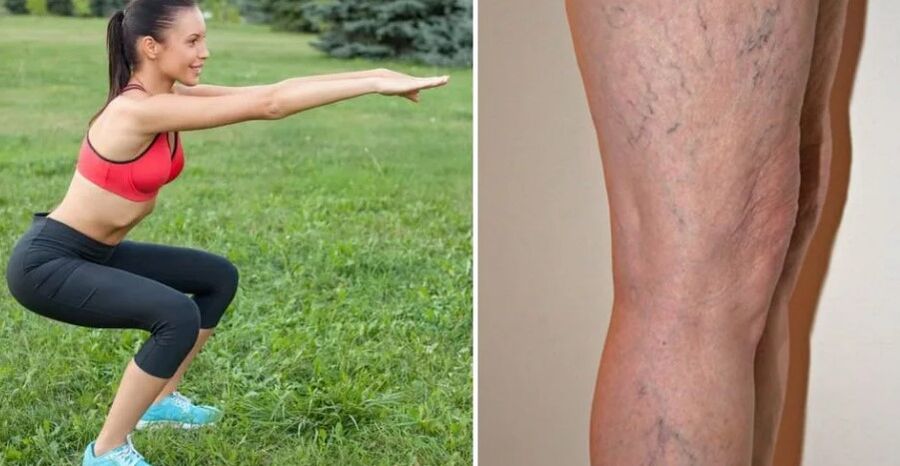
All necessary products from varicose veins are divided into:
- phlebotics;
- non -steroidal analgesics;
- hormonal drugs;
- antithromboid;
- Aspirin -based drugs.
Home treatment
Traditional medicine provides the use of various ointments, lotions, tinctures, legs or decoction.
Treatment of apple vinegar varicose veins. However, it is impossible to cure such a disease with folk recipes to relieve the symptoms, quite real, especially in the initial stage of development. For this, apple cider vinegar is used for packaging, wiping, oral administration or compresses.
How to avoid the disease?
A sedentary lifestyle, pregnancy is a greater workload, resulting in a disease such as varicose veins.
Varicose in women is the same problem as cellulite, so special creams, lotions, compression socks and lymphatic drainage were developed to combat it.
According to statistics, varicose veins in men are extremely rare and even if there is a much more slow development.
Can I play sports?
Varicose and running are two factors that always go nearby. The most effective prevention of the enlargement of the veins of any of the stages is constant physical activity: running, gymnastics, various exercises for leg strength, bicycle, etc.
There are a number of simple exercises to improve blood flow and prevent varicose veins:
- The rotation of the foot clockwise 20 times in each direction.
- Work with your fingers. Expanding and harvesting fingers 20 times.
- Star of socks, then on the heels and after rolling from heels to socks and back 20-30 times.























